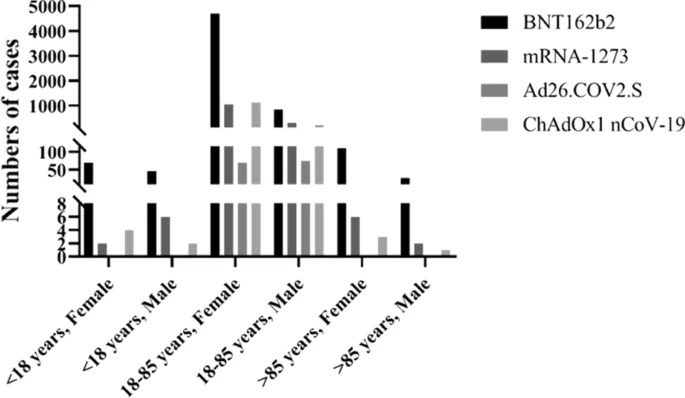- Research
- Open Access
Marharyta Sobczak & Rafał Pawliczak
A serious allergic reaction that may occur in response to medical products is anaphylaxis, which potentially can lead to anaphylactic shock. In the light of recent COVID-19 pandemic, much public attention had been paid to the severe allergic reactions occurring after COVID-19 vaccination. Therefore, in our study we would like to investigate the risk of authorized COVID-19 vaccines to induce anaphylactic reaction, anaphylactoid reaction, anaphylactic shock and anaphylactoid shock.
We searched databases, such as PubMed, Web of Science and Embase and found eight articles about the incidence of anaphylactic and anaphylactoid reactions. Also, we used data from four databases from Canada, the U.S., the European Union and the United Kingdom. To calculate effect sizes, we used random effects model with inverse variance method. The risk ratio with 95% confidence interval were used for dichotomous outcomes. Statistical analysis was prepared in R. Results were considered statistically significant at p < 0.05.
The most cases of anaphylactic reaction, anaphylactoid reaction, anaphylactic shock and anaphylactoid shock were reported in female aged 18–85 years after BNT162b2 vaccine according to data from the EU. Analyzed COVID-19 vaccines can cause the anaphylaxis/anaphylactic reaction with risk of 106.99 (95% CI [39.95; 286.57], p < 0.0001, I2 = 59%), whereas the anaphylactoid reaction, anaphylactic and anaphylactoid shocks with risk of 113.3 (95% CI [28.11; 456.53], p < 0.0001), 344.2 (95% CI [85.77; 1381.39], p < 0.0001), 14.9, 95% CI [1.96; 112.79], p = 0.009), respectively.
Our meta-analysis shows that the risk of anaphylactic reaction, anaphylactoid reaction, anaphylactic shock and anaphylactoid shock do not occur only after mRNA COVID-19 vaccines. Therefore, vaccination centers should be prepared to render assistance in the event of a reaction in all cases.

No comments:
Post a Comment